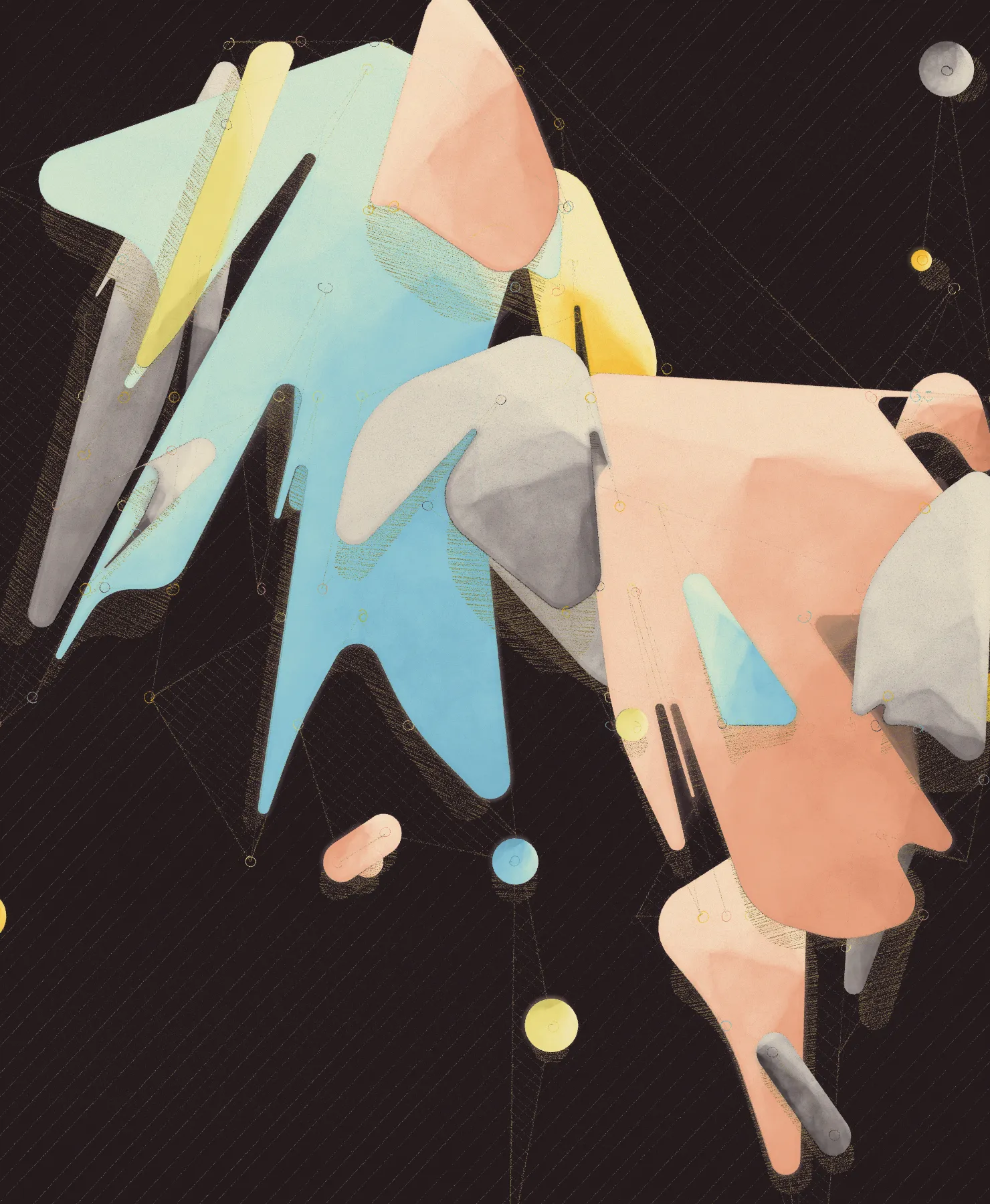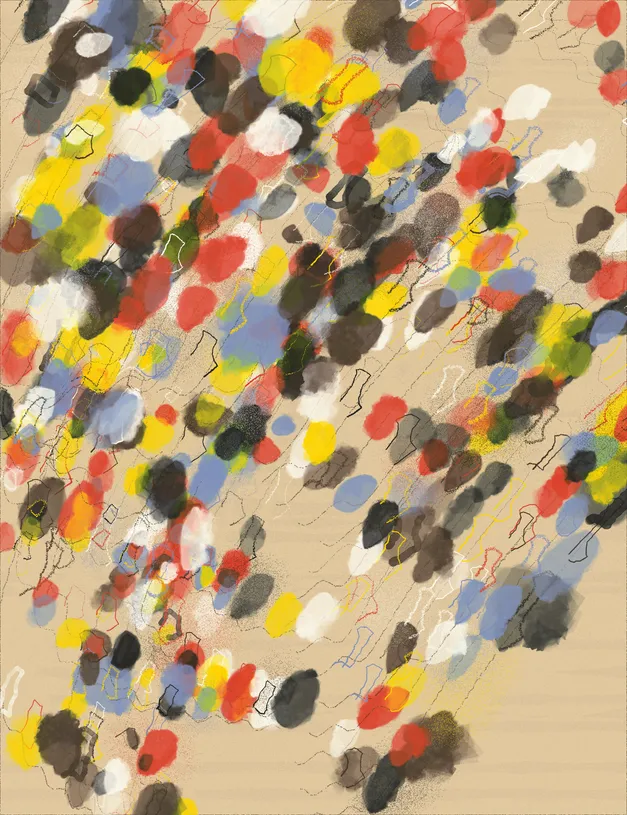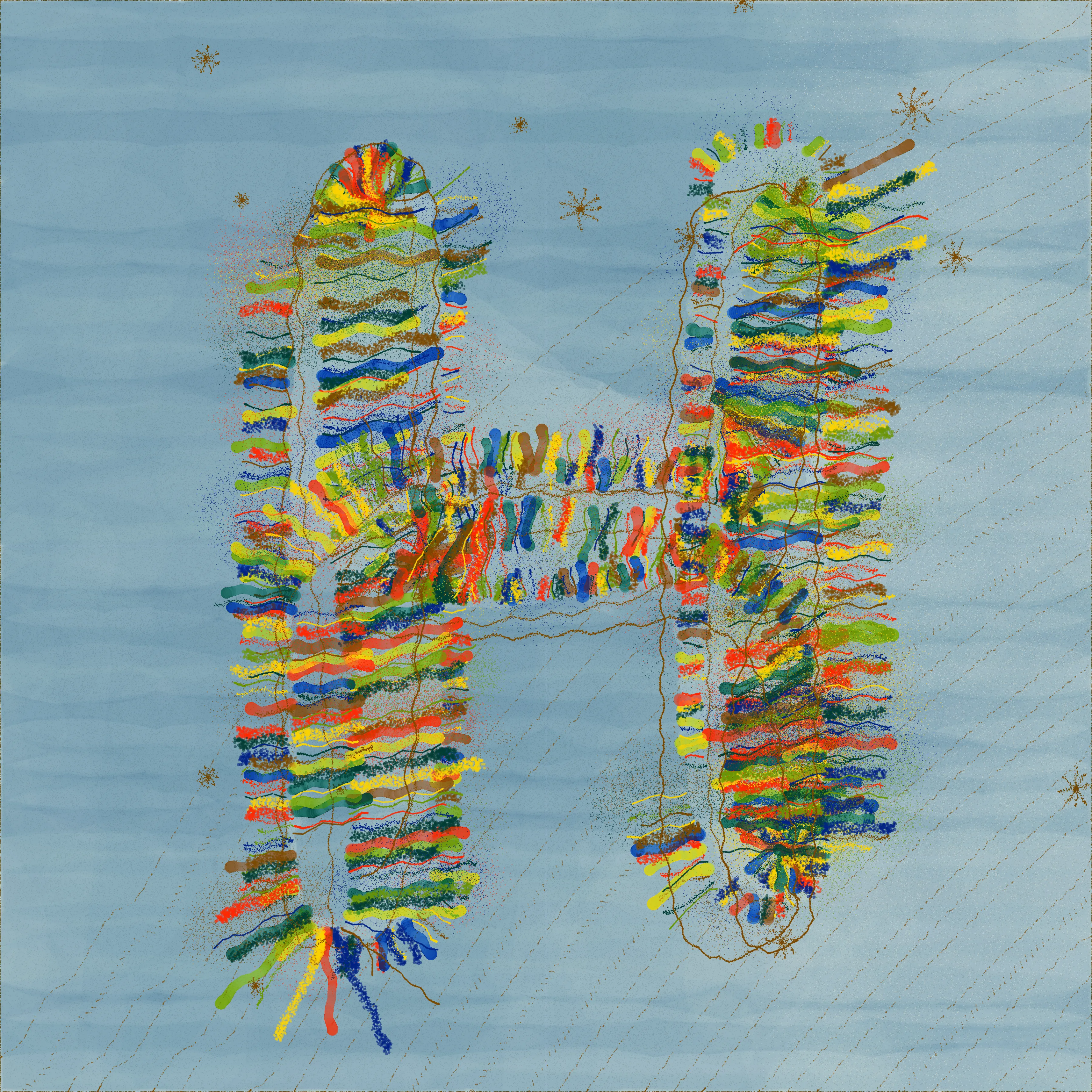Subscribe to get the latest on artists, exhibitions and more.
Alejandro Campos on Notions of Playfulness

Your work is rooted in playfulness. This is most apparent in you incorporating children's piano songs into your work. What is it that draws you to these concepts?
Playfulness is indeed a key notion that has always driven my work as an architect, researcher, and now creative coder. In fact, there is a long modern intellectual and artistic tradition that builds on play as a key element of culture and society, famously synthetized by Johan Huizinga in Homo Ludens (1938), and one could even say that Modern Art, as it evolved all through the twentieth century, was only possible due to a strong link with playfulness, imagination, and children. Since I started my journey as an architect, I’ve always felt captivated and inspired by intellectuals, artists and architects that gave the child an important place in their thinking: Alexander Calder, the CoBrA artists, Herbert Read, Enric Miralles and Josep Quetglas, Erik Satie... For me, personally, the main example would be Dutch architect Aldo van Eyck, whom I thoroughly studied for my Ph.D. and whom I’m still studying every day in my work as a teacher and researcher. In 1962, Aldo van Eyck’s wrote a book titled The Child, the City and the Artist, an exploration of modern thinking and its impact on architecture, and likewise he dedicated a big part of his life to design places for children such as schools, playgrounds, and most notable the Amsterdam’s orphanage. But further, there is a long list of brilliant individuals that appreciated children for their unbound imagination and their disregard of social and artistic conventions. In fact, one could say that children are generative, in the sense that they create things within a given system of cultural norms, but with unexpected and often greatly inspiring results. But also, and this is very important for me, children do have a body, they require a certain degree of care and gentleness that —if extended everywhere and to everyone, humans and non-humans alike— would make our world a much better place to live. To everyone that can read Spanish, I’d highly recommend Leer con niños (2015), by Spanish philosopher Santiago Alba Rico, discussing these questions.
Conversely, my on-going generative art series, Enfantines, has been trying to express my attachment to children and their creative outputs. The truth is that it all started as a game where I, as a child, in the sense that I recently started to use coding as a creative medium, experimented with the programmer’s tools in often naïve ways, little by little encultured into this fascinating field of Generative Art. Now, with Fuga a Tientas, I’m polishing the tools and looking for a more thorough exploration of the relationship of form and counterform.

Can you elaborate how you relate to the theme of Imperfections?
This is an interesting question, since I’d say that Perfection doesn’t really exist, it’s just something we - as humans - aspire to. But when we do things here, in little Earth, within the context of our everyday lifeworlds, they never reach the states of perfection that we had planned for. That’s also what’s interesting about children: they often disregard the need for a perfect outcome and put emphasis on processes, on how those processes take place, who is around, what is there to learn from them. Fuga a tientas explores a seemingly simple notion: repetition. The algorithm that composes the canvas works with a very small set of rules, it distributes rectangles and triangles along horizontal or circular lines. Starting from this perfect a priori, the algorithm starts to run away from perfection (fugarse, in Spanish, is to run away), to run away a tientas, which means literally “blindly”, but refers to something done carefully, in small steps and without making much noise. As rows and shapes accumulate, the result slowly shows its imperfection, feeding from algorithmic randomness. Of course, there is also the imperfection of the lines, textures, and blends that I’m trying to mimic digitally. Those are the parts that required the most work and technical experimentation, but they are only there to help give the artworks some physicality, to allow us to establish bodily relationships that reaffirm the feeling of imperfect execution.
How does intuition come into play with generative work?
The question goes straight to the difficulties I’ve been experiencing when creating both Enfantines and Fuga a tientas. You cannot teach intuition to a generative algorithm, and yet art cannot come without intuition. I think intuition is a human skill that comes from experience and from a predominantly human practice, what Pindar van Arman (an AI artist) always calls “feedback loop”. When we create a painting or a drawing, there is a certain act that we repeatedly perform: we stop, look back at what we drew, and react to what we see. This is something that generative algorithms don’t usually do, since they just follow a set of instructions that is given a priori. I’ve been wondering how to implement this feedback loop into Generative Art… the results are yet inconclusive! Fuga a tientas relies on my intuition, which gives the algorithm some basic rules that it must follow. For instance, “don’t do this kind of composition with this palette”, because it intuitively doesn’t look good. For the most part, the algorithm trusts my taste, not without strong arguments!

Are there any artists living or dead that inspire you ?
Apart from the ones previously mentioned - most of them not alive anymore -, I must say that there are several Generative Artists which inspire me every day of my journey. William Mapan, Sarah Ridgley, Erik Swahn, Jacek Markusiewicz, Lars Wander, Qubibi. Surely, there are elements from their work in Enfantines and Fuga a tientas.
You are an architect, educator and generative artist. How do these three overlap? Do you find it difficult to play three roles?
Short answer: yes. It’s been difficult to balance my time in between these three activities. For now, there is little overlap, although I’m trying to gradually feed one into the others, which is what will make what I do, I think, different from what other people can do. I’m no hardcore programmer or computer engineer, nor am I a full-time scholar, nor a person who has to deal with the everyday of an architecture office, since there are people with whom I collaborate in all these things that I do. Let’s say that I’m a bit in-between things, which is no different than everyone else, in-between places, and times, and ideas, “an enormous in-between realm, one whence all legends, myths, passions, birds, fish, worms, flowers, witticisms and people come, and to which they return”.

Alejandro Campos
Alejandro is a Spanish Creative Coder based in Rotterdam, where he currently holds an academic position as a Lecturer at the Department of Architecture, Delft University of Technology. As a scholar, Alejandro specialises in the history of Modern Architecture and the colonial dynamics behind its universalising claims.
His generative artworks connect interests on art history, critical theory...
Leyla Fakhr
Leyla Fakhr is Artistic Director at Verse. After working at the Tate for 8 years, she worked as an independent curator and producer across various projects internationally. During her time at Tate she was part of the acquisition team and worked on a number of collection displays including John Akomfrah, ‘The Unfinished Conversation’ and ‘Migrations, Journeys into British Art’.
She is the editor...


